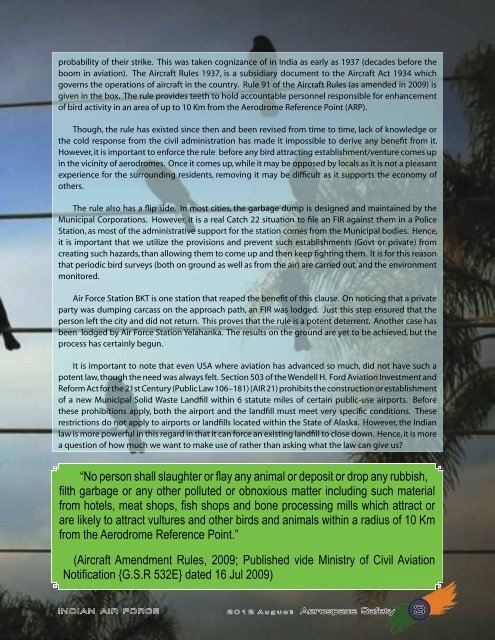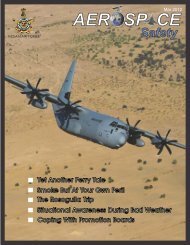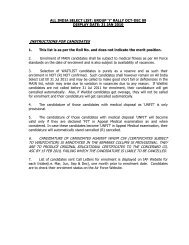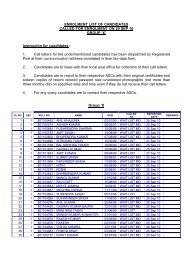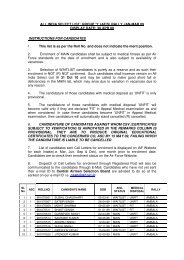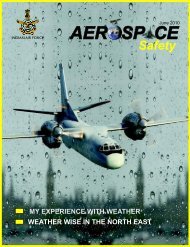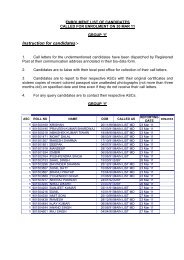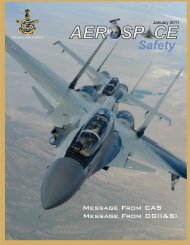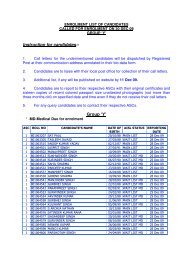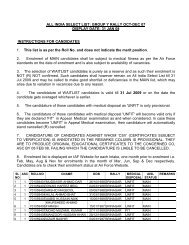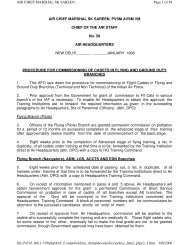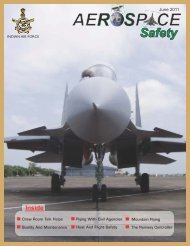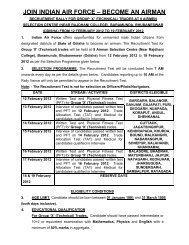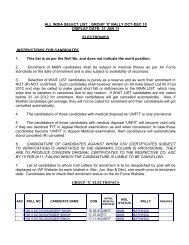Create successful ePaper yourself
Turn your PDF publications into a flip-book with our unique Google optimized e-Paper software.
probability of their strike. This was taken cognizance of in India as early as 1937 (decades before the<br />
boom in aviation). The Aircraft Rules 1937, is a subsidiary document to the Aircraft Act 1934 which<br />
governs the operations of aircraft in the country. Rule 91 of the Aircraft Rules (as amended in 2009) is<br />
given in the box. The rule provides teeth to hold accountable personnel responsible for enhancement<br />
of bird activity in an area of up to 10 Km from the Aerodrome Reference Point (ARP).<br />
Though, the rule has existed since then and been revised from time to time, lack of knowledge or<br />
the cold response from the civil administration has made it impossible to derive any benefi t from it.<br />
However, it is important to enforce the rule before any bird attracting establishment/venture comes up<br />
in the vicinity of aerodromes. Once it comes up, while it may be opposed by locals as it is not a pleasant<br />
experience for the surrounding residents, removing it may be diffi cult as it supports the economy of<br />
others.<br />
The rule also has a fl ip side. In most cities, the garbage dump is designed and maintained by the<br />
Municipal Corporations. However, it is a real Catch 22 situation to fi le an FIR against them in a Police<br />
Station, as most of the administrative support for the station comes from the Municipal bodies. Hence,<br />
it is important that we utilize the provisions and prevent such establishments (Govt or private) from<br />
creating such hazards, than allowing them to come up and then keep fi ghting them. It is for this reason<br />
that periodic bird surveys (both on ground as well as from the air) are carried out, and the environment<br />
monitored.<br />
Air Force Station BKT is one station that reaped the benefi t of this clause. On noticing that a private<br />
party was dumping carcass on the approach path, an FIR was lodged. Just this step ensured that the<br />
person left the city and did not return. This proves that the rule is a potent deterrent. Another case has<br />
been lodged by Air Force Station Yelahanka. The results on the ground are yet to be achieved, but the<br />
process has certainly begun.<br />
It is important to note that even USA where aviation has advanced so much, did not have such a<br />
potent law, though the need was always felt. Section 503 of the Wendell H. Ford Aviation Investment and<br />
Reform Act for the 21st Century (Public Law 106–181) (AIR 21) prohibits the construction or establishment<br />
of a new Municipal Solid Waste Landfi ll within 6 statute miles of certain public-use airports. Before<br />
these prohibitions apply, both the airport and the landfi ll must meet very specifi c conditions. These<br />
restrictions do not apply to airports or landfi lls located within the State of Alaska. However, the <strong>Indian</strong><br />
law is more powerful in this regard in that it can force an existing landfi ll to close down. Hence, it is more<br />
a question of how much we want to make use of rather than asking what the law can give us?<br />
“No person shall slaughter or fl ay any animal or deposit or drop any rubbish,<br />
fi lth garbage or any other polluted or obnoxious matter including such material<br />
from hotels, meat shops, fi sh shops and bone processing mills which attract or<br />
are likely to attract vultures and other birds and animals within a radius of 10 Km<br />
from the Aerodrome Reference Point.”<br />
(Aircraft Amendment Rules, 2009; Published vide Ministry of Civil Aviation<br />
Notifi cation {G.S.R 532E} dated 16 Jul 2009)<br />
INDIAN AIR FORCE 2 0 1 2 A u g u s t<br />
Aerospace Safety 3


